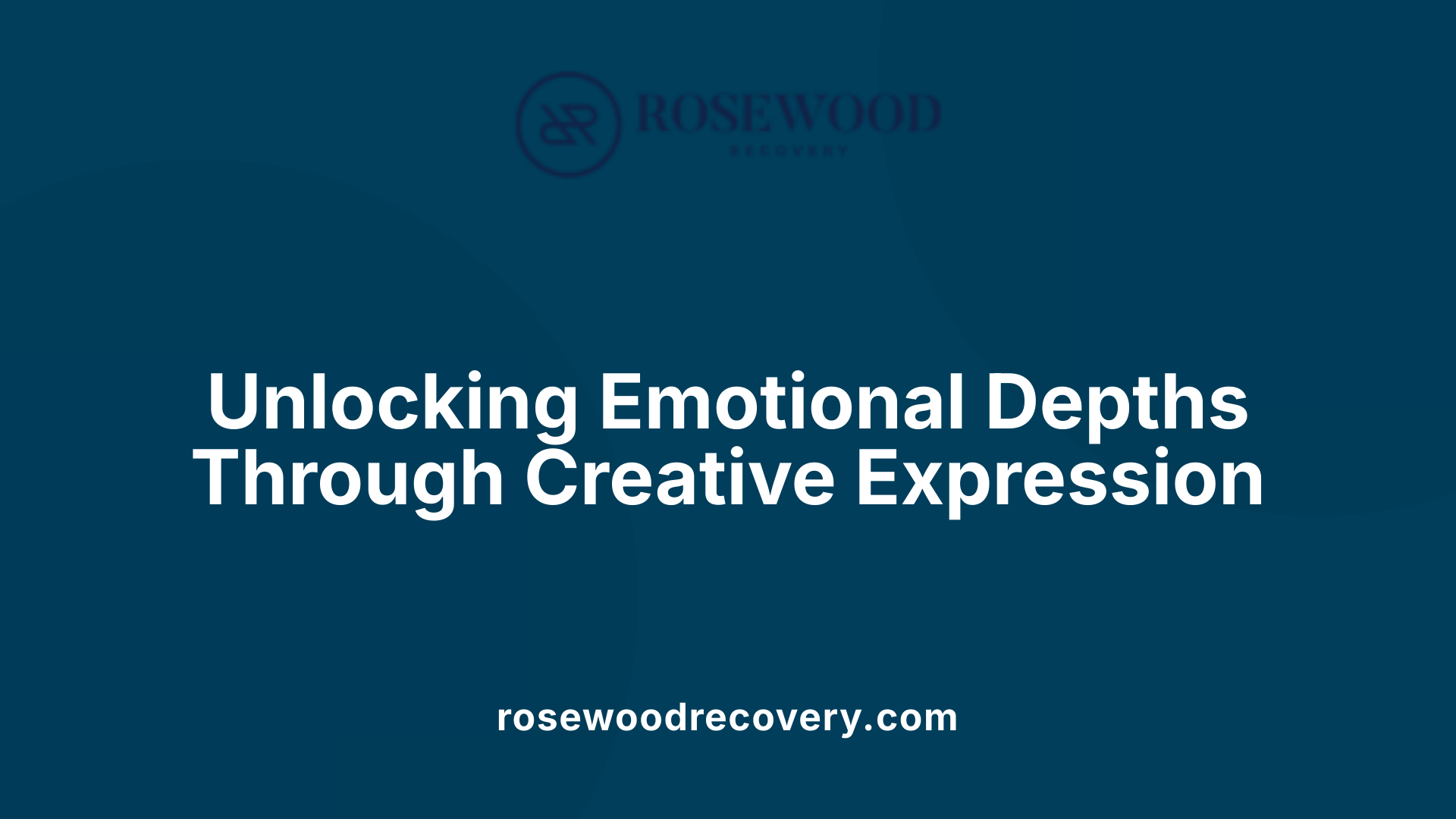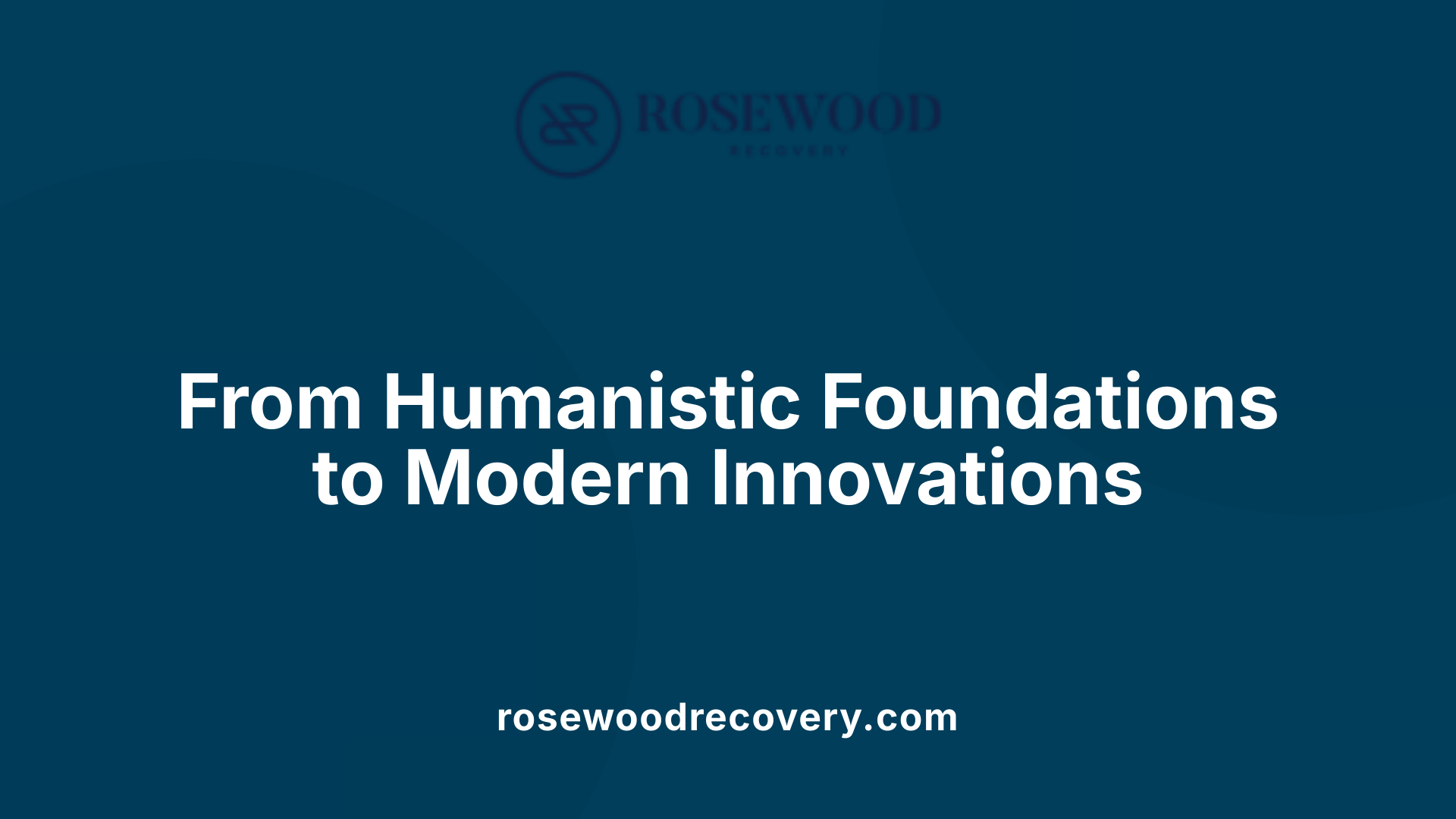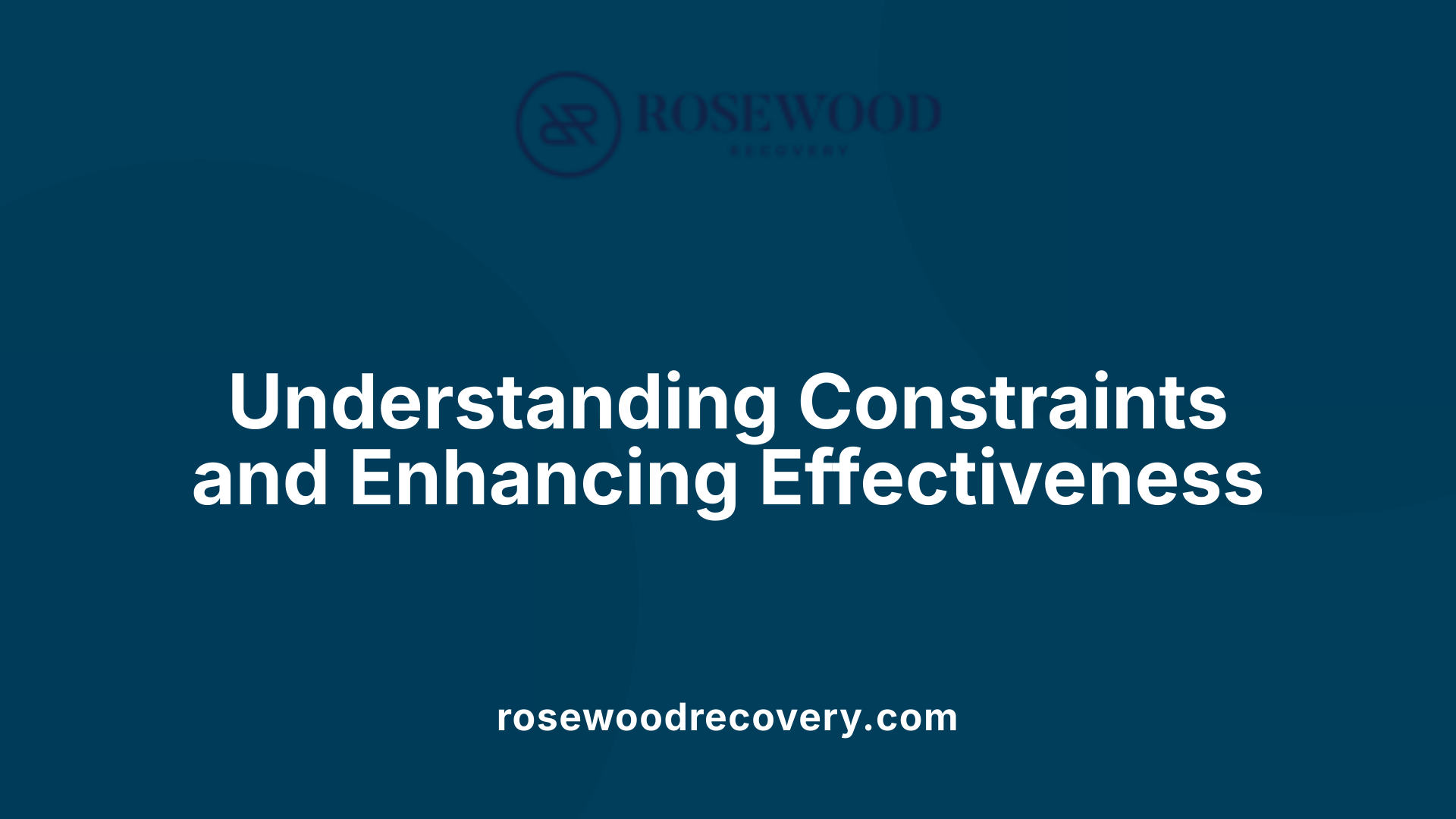Exploring the Power of Experiential Group Therapy
In the realm of mental health treatment, experiential group therapy stands out as a vibrant, engaging approach that facilitates emotional expression and personal growth. Unlike traditional talk therapies, it emphasizes active participation through creative and physical activities, allowing individuals to re-experience, process, and release deep-seated emotions. This article explores what experiential group therapy is, how it functions, its benefits, and its vital role in recovery from mental health issues and addiction.
Defining Experiential Group Therapy
What is experiential group therapy?
Experiential group therapy is a dynamic approach that uses activities such as creative arts, role-playing, imagery, and outdoor adventures to help participants explore and express their inner experiences. Unlike traditional talk therapy, this method emphasizes active participation, allowing individuals to engage physically and emotionally in the therapeutic process.
Through these activities, clients can access subconscious emotions, re-experience past situations, and develop new insights. Group settings foster a supportive environment where members share, observe, and reflect on their experiences, leading to personal growth and emotional healing. Common techniques include drama therapy, animal-assisted activities, adventure therapy, and body-centered exercises.
This form of therapy is grounded in humanistic psychology, focusing on the whole person and emphasizing self-awareness, self-expression, and the therapeutic relationship. It is effective for a variety of mental health issues such as trauma, addiction, grief, and depression, especially when combined with traditional treatments like cognitive-behavioral therapy. Overall, experiential group therapy offers a holistic, engaging approach to emotional processing and recovery.
How Experiential Group Therapy Functions and Techniques
Methodology
Experiential group therapy relies on active participation and expressive activities to promote healing among group members. Instead of focusing solely on talking about problems, participants engage in hands-on activities that stimulate emotional and physical responses. The process revolves around immersing individuals in creative, physical, and social experiences that facilitate personal insight, emotional regulation, and relationship building.
Sessions are carefully structured but flexible, guided by trained therapists who observe and facilitate interactions. The core idea is to activate natural healing pathways by accessing subconscious emotions through direct experience. This approach helps group members process trauma, resolve conflicts, and develop healthier coping skills in a supportive environment.
Interactive Modalities
A variety of modalities are used within experiential group therapy to stimulate self-awareness and change. Creative arts like art therapy, music therapy, and drama therapy are common, allowing participants to express feelings beyond words.
Outdoor and nature-based activities such as adventure therapy, wilderness challenges, and equine therapy provide experiential learning through physical activity in natural settings. These activities promote trust, teamwork, resilience, and emotional release.
Mindfulness and body-centered practices like meditation, yoga, and somatic exercises help individuals reconnect with their bodily sensations and emotional responses. Animal-assisted interactions, especially with horses and other animals, facilitate emotional bonding and trust.
Specific Techniques
Several specific techniques are utilized to achieve therapeutic goals:
| Technique | Description | Benefits |
|---|---|---|
| Role-Playing | Acting out scenarios to explore feelings and behaviors | Builds empathy, improves communication |
| Art and Music Therapy | Creating visual art or engaging with music to express emotions | Enhances self-awareness, reduces stress |
| Drama and Psychodrama | Using theatrical techniques to re-enact life events | Facilitates insight, catharsis |
| Equine and Animal Therapy | Interacting with animals to develop trust and emotional regulation | Boosts confidence, emotional bonds |
| Outdoor Adventure Activities | Hiking, climbing, or team-building exercises | Promotes resilience and trust |
| Guided Imagery and Visualization | Using mental images to explore inner worlds | Aids in trauma processing and relaxation |
In essence, experiential group therapy offers a dynamic, engaging approach that combines creativity, movement, and social interaction. This active approach allows participants to access and process emotions in a holistic manner, fostering long-lasting change and improved mental health.
Benefits of Experiential Group Therapy

What are the benefits of experiential group therapy?
Experiential group therapy combines engaging activities with the support of a group environment to promote emotional healing and personal development. Through activities such as art, role-playing, outdoor adventures, and creative expression, clients can access and process complex emotions that might be hard to discuss verbally.
One significant advantage of this approach is its ability to enhance emotional processing. When individuals participate in hands-on activities, they often connect with feelings more deeply, facilitating insight and release of negative emotions like shame, anger, or grief. The group setting further amplifies this by fostering a sense of belonging, reducing feelings of isolation, and allowing clients to see they are not alone in their struggles.
Another essential benefit is the growth of self-awareness. By observing their reactions during activities and receiving feedback from peers, participants gain a better understanding of their emotional patterns, behavioral triggers, and interpersonal dynamics. This increased awareness supports healthier behaviors and relationship habits.
Peer support plays a pivotal role in experiential group therapy. Sharing experiences and participating in activities together creates bonds, encourages mutual encouragement, and builds community. This environment not only offers motivation but also models successful coping strategies through shared learning.
Overall, experiential group therapy helps individuals develop skills for handling emotions, improve social interaction, and foster resilience. By engaging actively in their healing process in a supportive setting, clients are empowered to make meaningful changes and sustain long-term growth.
For more insights into this therapeutic modality, searching "benefits of experiential group therapy" can provide additional resources and research findings.
Role in Mental Health and Addiction Recovery
 Experiential therapy has an important function in supporting individuals dealing with mental health conditions and addiction. Its approach involves engaging clients in active, hands-on activities such as art, music, role-playing, animal therapy, and outdoor adventures.
Experiential therapy has an important function in supporting individuals dealing with mental health conditions and addiction. Its approach involves engaging clients in active, hands-on activities such as art, music, role-playing, animal therapy, and outdoor adventures.
These activities allow clients to access and process hidden emotions and past traumas in a safe environment. For example, re-enacting parts of their history through role-play or creative arts helps individuals uncover emotional patterns and reframe negative experiences.
Understanding and managing emotions is central to recovery. Experiential therapy helps improve emotional regulation by focusing on present sensations and feelings. This helps clients develop healthier responses to stress, triggers, and interpersonal challenges.
Building self-esteem is another crucial aspect. As clients participate in meaningful activities, they gain confidence and a sense of accomplishment. Activities like animal-assisted therapy or outdoor adventures foster empowerment, encouraging individuals to trust their abilities and foster resilience.
Moreover, resilience and empowerment are cultivated through active participation and experiential learning. Facing real-world challenges via outdoor pursuits or creative expression allows clients to develop problem-solving skills and self-efficacy.
When combined with traditional therapies like cognitive behavioral therapy or medication, experiential therapy offers a comprehensive approach. It addresses emotional, behavioral, and relational issues, supporting long-term recovery.
In summary, experiential therapy plays a multifaceted role in recovery by promoting trauma processing, emotional regulation, enhanced self-esteem, and resilience-building. This method helps individuals re-experience and reframe their emotional narratives, leading to greater self-awareness and lasting change.
Types and Methods of Experiential Therapy
What are the different types and methods of experiential therapy?
Experiential therapy is a versatile approach that utilizes various activities and techniques to facilitate emotional healing and self-discovery. These methods include creative arts such as art therapy, music therapy, and drama therapy, which use visual and performing arts to help clients express and process emotions.
Physical and outdoor activities also play a significant role. These include adventure or nature therapy, outdoor team-building exercises, wilderness therapy, and equine-assisted therapy, involving interactions with horses or other animals to promote trust and emotional regulation.
Role-playing techniques like psychodrama or the use of imagery such as guided visualization help clients reenact or simulate emotional situations, leading to greater insight. Body-centered therapies and activities like dance, movement, mindfulness, and embodiment exercises focus on sensations and physical responses to unlock subconscious emotions.
Core concepts emphasize a bottom-up approach, targeting physical feelings and emotional responses rather than only relying on verbal discussion. This helps clients access deeper layers of their experience, fostering personal growth and healing.
Overall, experiential therapy includes a broad spectrum of interventions—ranging from arts-based modalities to outdoor and body-oriented activities—that aim to help clients access, express, and reprocess hidden feelings. These approaches are effective in treating trauma, addiction, mood disorders, and more, by promoting emotional awareness, resilience, and behavioral change.
Historical Development of Experiential Therapy

How has experiential therapy developed historically?
Experiential therapy emerged primarily in the 1940s, rooted in the principles of humanistic psychology. Its founders and early practitioners, including Abraham Maslow and Carl Whitaker, emphasized the importance of active engagement, emotional expression, and personal experience over traditional talk therapy.
Initially, it drew heavily from client-centered therapy developed by Carl Rogers, Gestalt therapy introduced by Fritz Perls, and existential-humanistic philosophies that focused on whole-person awareness. The approach encouraged clients to confront their feelings directly through creative and physical activities.
Throughout the 1960s and 1970s, experiential therapy gained momentum, especially within family therapy practices. Pioneers like Virginia Satir and Eugene Gendlin expanded its scope by integrating techniques such as role-playing, symbolic activities, and the exploration of subconscious emotions.
In the 1980s, models like emotionally focused couples therapy and adventure therapy became notable, expanding the repertoire of experiential techniques to include outdoor activities and relationship-centered interventions.
The influence of phenomenology and existential thought further deepened the focus on present-moment awareness and authentic experience. This period marked a diversification in modalities, now including psychodrama, arts therapies (like music and art therapy), animal-assisted therapies, and wilderness adventures.
Over recent decades, experiential therapy has seen periods of both decline and resurgence, driven by ongoing research and new integration strategies. Today, it continues to evolve with contributions from clinicians such as Carl Whitaker and Virginia Satir, blending creative activities with evidence-based practices.
Its development reflects a broader shift toward holistic, client-centered approaches that recognize the power of direct experience in facilitating emotional healing, trauma processing, and personal growth. The legacy of experiential therapy is one of innovation and adaptation, maintaining its relevance in modern mental health treatment.
Special Considerations and Limitations

What are the limitations of experiential therapy?
Experiential therapy is a dynamic and engaging approach, but it does come with certain limitations. Some forms, such as equine-assisted therapy and wilderness therapy, have inconclusive scientific evidence supporting their effectiveness. While these modalities show promise, ongoing research is needed to solidify their place within evidence-based practices.
Cost is another significant factor. Experiential therapy often requires specialized facilities, trained therapists, and unique resources like animals, outdoor equipment, or art supplies. These elements can make sessions expensive, potentially limiting access for some clients.
Furthermore, the suitability of experiential therapy varies depending on individual circumstances. Not everyone may find active, hands-on activities comfortable or beneficial. Personal preferences, physical limitations, or certain mental health conditions could affect engagement levels and outcomes.
While studies support benefits such as improved emotional regulation, trauma processing, and confidence building, not all techniques have a robust scientific foundation yet. As a result, some providers and clients might view certain methods as experimental or adjuncts rather than standalone treatments.
Despite these limitations, experiential therapy continues to be a valuable component of holistic mental health treatment. When tailored appropriately and combined with traditional therapies, it offers meaningful avenues for emotional exploration and personal growth.
Integration with Traditional Therapies and Future Perspectives

How does experiential therapy integrate with traditional approaches?
Experiential therapy is frequently combined with established evidence-based practices such as cognitive behavioral therapy (CBT), eye movement desensitization and reprocessing (EMDR), and mindfulness-based methods. This integration allows clinicians to address multiple facets of mental health, blending cognitive processes with emotional and somatic experiences.
By incorporating experiential activities like art, role-playing, and outdoor exercises, therapists can facilitate deeper emotional processing that often complements the more analytical focus of traditional therapies. For instance, while CBT might help clients recognize and challenge distorted thoughts, experiential activities help them access and reframe subconscious emotional patterns.
This comprehensive approach not only enriches the therapeutic process but also enhances engagement and effectiveness. The combination of methods helps individuals develop more robust coping skills, address trauma at both conscious and subconscious levels, and foster personal growth.
Research and development
The field of experiential therapy is dynamic, with ongoing research exploring its full potential and efficacy. As scientific studies accumulate, there's a growing emphasis on creating holistic, client-centered models that integrate various therapies for optimized outcomes.
Future directions include expanding access to these interventions through digital platforms and community programs. Researchers are also working toward refining techniques based on neurobiological findings, measuring outcomes more precisely, and tailoring interventions to diverse populations.
Latest developments suggest that combining experiential therapy with traditional techniques can be particularly effective for complex cases involving trauma, addiction, and emotional regulation. Overall, continued research aims to solidify experiential therapy’s role within mainstream mental health treatment and to innovate new ways for clients to benefit from these powerful modalities.
Harnessing Active Engagement for Lasting Change
Experiential group therapy embodies a dynamic and holistic approach to mental health treatment, emphasizing active participation, creative expression, and emotional exploration. Its diverse techniques foster deep insight, emotional release, and social connection, making it a powerful tool for healing trauma, managing addiction, and enhancing overall well-being. When integrated with traditional therapies, experiential group therapy offers a comprehensive path toward lasting personal growth and resilience, helping individuals and groups unlock their potential for transformation.
References
- Experiential Therapy Guide: 24 Activities, Techniques & Examples
- Experiential Therapy | Psychology Today
- Experiential Therapy | Hazelden Betty Ford
- Experiential therapy | EBSCO Research Starters
- The Life-Changing Benefits Of Experiential Therapy
- Experiential Therapy Activities & Ideas for Adults | What You Should ...
- Experiential Therapy Activities - Mile High Recovery Center
- Experiential Therapy - Embark Behavioral Health
- Experiential Therapy in Mental Health l MBO - Mind Body Optimization
- TOP 8 EXPERIENTIAL THERAPIES & THEIR BENEFITS

.jpeg)


